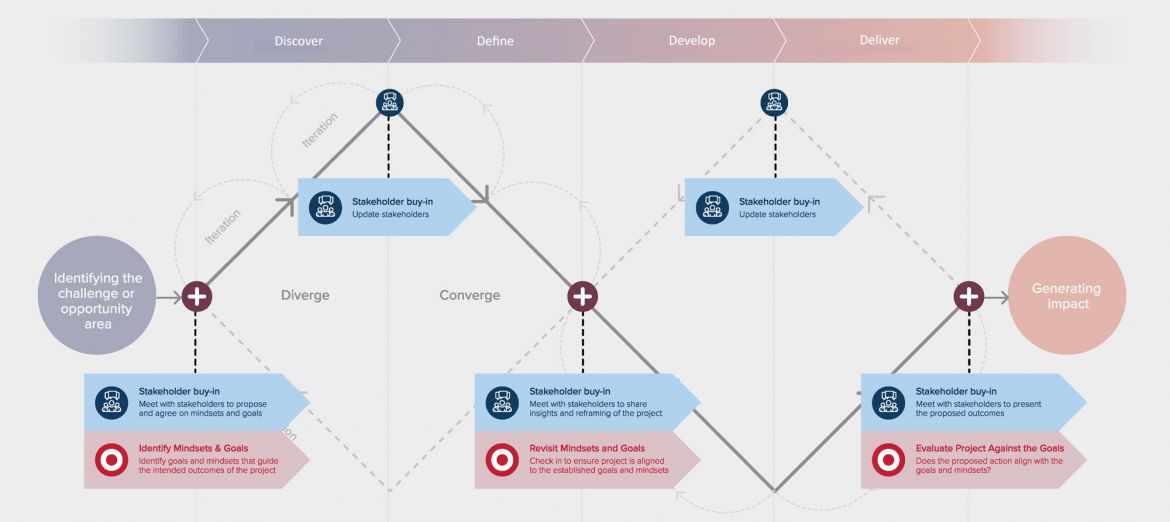What do we mean by involving stakeholders?
Firstly, when we say ‘involve stakeholders’, we mean those that use your council service, those that could potentially use your service or those that might use your service in future or it may be those who have a role in delivering a service e.g. third sector organisations. Involving stakeholders is central to a service design approach, it allows officers to design services with those that use or might use a service rather than making assumptions on the needs.

The design process is a continuous conversation with stakeholders. How often and what depth those conversations take will look different depending on the nature and scale of the service you are trying to change, and based on the relationship (and duty of care even) that you might have with who will use and deliver these services.
While the details will look different dependent on these factors, there are some key principles we have found helpful:
- Identify mindset and goals – this enables officers to understand what the problem, issue or challenge is.
- Buy in through updates – ensure you communicate the findings from the discover phase, you might have engaged a range of stakeholders through different tools, report back the findings.
- Revisit mindsets and goals – now you have undertaken the discover and define phase, sense check with stakeholders, is there information missing, do you need to go back a step (and if so this is okay).
- Buy in through updates – once you have completed the develop stage, once again check in with stakeholders to ensure that everyone is in the loop.
- Evaluate project against the goals - this is critical as it finishes off the process, it demonstrates you have listened and worked with stakeholders to do something differently to meet their needs.
How do you know how to select stakeholders?
- Utilise quantitative data from your service – who uses the service but also who doesn’t as that can also be important for marginalised sectors of the community.
- Tools such as stakeholder wheel can help you identify stakeholders and power/interest grid can help you prioritise who to involve.
-
The Scottish Approach to Service Design
The vision for the Scottish Approach to Service Design is that the people of Scotland are supported and empowered to actively participate in the definition, design and delivery of their public services (from policy making to live service improvement).
-
The Double Diamond (Design Council)
The Double Diamond is a visual representation of the design and innovation process. It’s a simple way to describe the steps taken in any design and innovation project, irrespective of methods and tools used.